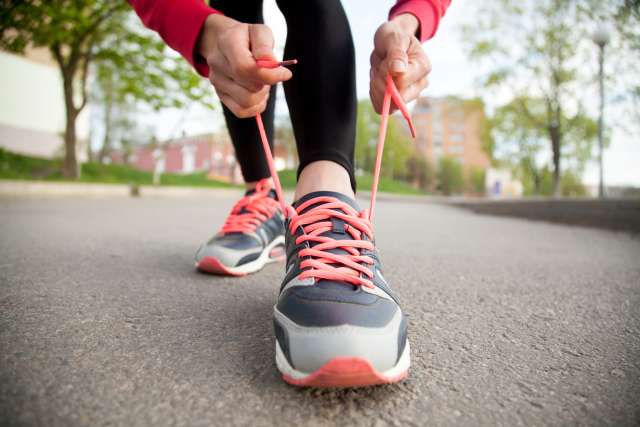Weekdays can be crazy. Between work, caring for others, running errands and household responsibilities, fitting in a workout may seem nearly impossible. But that doesn’t mean you should give up on getting your weekly exercise. The U.S. Department of Health and Human Services recommends getting at least 150 to 300 minutes of moderate-intensity aerobic activity and two days of strength training each week.
When you exercise and how you exercise doesn’t matter all that much. The important thing is that you’re active. A recent study found that walking for exercise just one to two days a week is still great for your health. Getting at least 8,000 steps — walking 3.5 to 4 miles (depending on pace and stride length) on those days can lower your overall risk of death by 15% and your risk of cardiovascular disease-related death by 8%.
While you may only get some of the recommended physical activity in two walks a week, the exercise you do get will be beneficial. Check with your physician before starting this or any new fitness routine. Once you have the all-clear, these tips will help you make the most of your weekend walks:
1. Use a fitness tracker to walk more
There are many ways to track your walking — how many minutes you walk, how far you go or how many steps you take. Research shows that wearing a fitness tracker encourages people to walk up to 40 more minutes a day.
If you are competitive, a tracker also makes it easy to find the fun in your workout. The average American walks between 3,000 and 4,000 steps a day. Challenge a family member, friend or even yourself to push further.
2. Walk for at least 10 minutes at a time for a mood boost
Walking has proven benefits for improving mood, and those feel-good vibes kick in after just 10 minutes. The benefit keeps increasing with every 10 minutes of walking you add (up to an hour).
Don’t have a big chunk of time this Saturday? See if you can fit in several shorter 10-minute walks. You’ll boost your mood throughout the day and rack up minutes toward your weekly exercise goal.
3. Mix in some interval walking to help your memory
It’s easy to set a comfortable pace and get your walking done. But pushing yourself out of your comfort zone has benefits. Interval walking — alternating an easy pace with a fast pace — is better for your memory than walking at a consistent speed and may lower your risk of dementia. The higher aerobic fitness you achieve with interval walking increases the blood flow to your brain (improving cognition) and reduces arterial stiffness (hardened arteries), a risk factor for dementia and Alzheimer’s disease.
Interval walking can be as simple as walking for three minutes at a comfortable pace followed by three minutes of walking at a brisk pace — fast enough that having a conversation is difficult. Don’t have a watch on you? Change your speed after you pass a certain number of houses or walk a few blocks.
4. Pump your arms to strengthen your core and back
Using your arms while you walk increases the aerobic benefit and helps you walk faster. Pumping your arms can also help build muscle strength in your arms, core and back.
Keep your arms bent at a 90-degree angle to make sure the movement comes from your shoulders, not your elbows. The swing should go front to back, with your arms staying parallel to each other —don’t bring them across your body. For an added challenge, consider carrying light weights while you walk.
5. Walk in nature to stay mentally healthy
Want to lower your risk of mental illness? Take your walk off the beaten track. Research shows that walking in nature reduces neural activity in the part of the brain associated with the risk of mental illness.
Spending time outdoors can also benefit your cognition. Studies find the ability to complete tasks based on working memory and attention consistently improves after exposure to nature.
6. Protect yourself while you walk
Walking is a relatively safe way to exercise, but be sure to safeguard yourself against:
- Joint pain: Wear supportive footwear to protect knee and ankle joints from the wear and tear from pounding the pavement. Replace sneakers after six months or when the soles look worn down (whichever comes first).
- Sun exposure: Walking outdoors means extra time in the sun. Protect your skin from UV exposure by applying sunblock before you head out. As an alternative, wear sun-protective clothing and a hat.
- Insects: If your walk takes you into a wooded area, apply tick repellent before you go. When you return, remove your clothes and thoroughly check your body to remove any ticks you picked up.
7. Stay consistent with your workout for lasting health benefits
Walking regularly, even just two days a week, will benefit your health in the long run. The health benefits of regular walking include:
- Better sleep
- Healthier joints
- Stronger bones
- Protection from heart disease
When you make exercise a habit, whether daily or weekly, you’re more likely to meet the physical activity guidelines for adults. Those recommendations are in place to keep you physically and mentally healthy.



